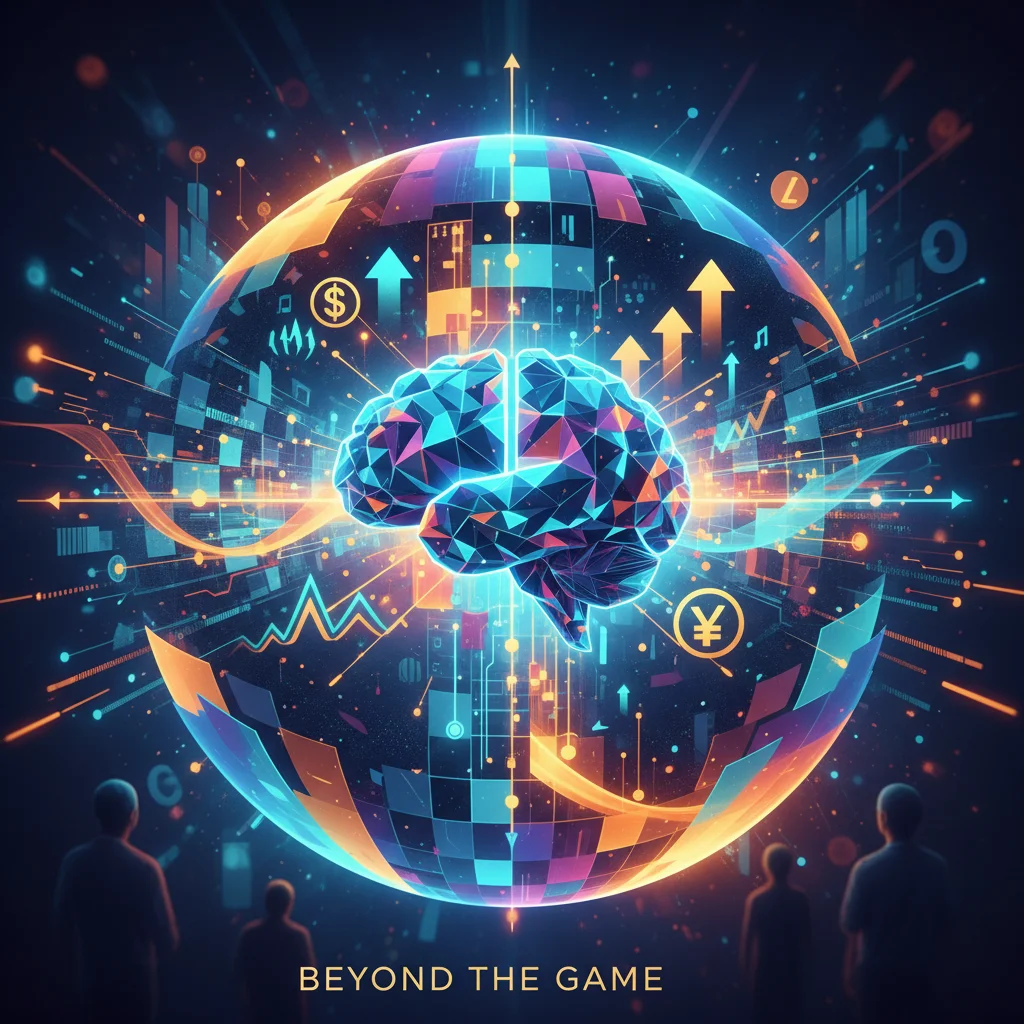
Beyond the Game: Why Elon Musk’s “World Model” AI is a Multitrillion-Dollar Bet for Investors
In the relentless arena of technological supremacy, the battle lines are constantly being redrawn. While the world remains captivated by generative AI’s ability to write poems and create images, a far more profound revolution is quietly taking shape. It’s a race to build not just intelligent agents, but entire simulated realities. Now, Elon Musk’s ambitious AI venture, xAI, has officially thrown its hat into the ring, joining giants like OpenAI and Google in the quest to develop “world models.” As reported by the Financial Times, this initiative, initially framed around powering the next generation of video games, is a deceptive masterstroke. For savvy investors, business leaders, and finance professionals, looking past the pixels reveals the blueprint for a technology poised to redefine the global economy, from the stock market to international banking.
This isn’t merely about creating more realistic video games. It’s about building foundational AI that can understand, simulate, and predict complex, dynamic systems. The same technology that can generate a persistent, interactive virtual world could one day simulate market volatility, stress-test the global financial system, or design entirely new economic models. The race for world models is the new space race, and its outcome will have seismic implications for investing, fintech, and the very fabric of our economic future.
Deconstructing the Digital Universe: What Exactly Are “World Models”?
Before diving into the financial ramifications, it’s crucial to understand the technological leap that world models represent. Current large language models (LLMs) like ChatGPT are masters of statistical patterns in data. They can predict the next word in a sentence with incredible accuracy, but they lack a genuine, underlying understanding of cause and effect—the “physics” of the world.
A world model, by contrast, is a neural network designed to build an internal, predictive simulation of its environment. It learns the fundamental rules, relationships, and consequences within a given reality. Think of it this way:
- An LLM can describe a bouncing ball by drawing on countless descriptions it has read.
- A World Model learns the concepts of gravity, elasticity, and momentum, allowing it to predict the ball’s trajectory even in novel situations it has never seen before.
This ability to build a compressed, learnable model of reality is a critical step towards Artificial General Intelligence (AGI). Video games, with their defined physics and goal-oriented agents, serve as the perfect digital petri dish for training these models. If an AI can learn the intricate rules of a complex game world, it can then apply that foundational learning to the more chaotic, unpredictable rules of the real world—including the world of finance and economics.
The New Titans: A High-Stakes Battle for AI Supremacy
Elon Musk’s xAI is a late but formidable entrant into a field already dominated by well-funded behemoths. The competition is fierce, with each player bringing a unique approach to building these digital realities. For investors, understanding the landscape is key to identifying future market leaders.
Here’s a look at the primary contenders in the race to build functional world models:
| Company / Entity | Key Technology / Project | Primary Backer(s) / Affiliation | Potential Market Disruption |
|---|---|---|---|
| xAI | Unnamed “World Model” Project | Elon Musk, various investors | Aims to create a “truth-seeking” AI, potentially integrating with Musk’s other ventures (Tesla, X). Focus on real-world physics and reasoning could give it an edge in engineering and economic simulations. |
| OpenAI | Sora | Microsoft, Thrive Capital | Sora’s ability to generate stunningly realistic video from text prompts demonstrates a deep, implicit understanding of physical world dynamics. This tech is a direct precursor to interactive world models, with huge implications for media, advertising, and training simulations. |
| Google DeepMind | Genie, SIMA | Alphabet Inc. | Genie can generate playable, interactive 2D game worlds from a single image. SIMA (Scalable, Instructable, Multiworld Agent) can follow natural-language instructions in various 3D game environments. This signals a focus on creating adaptable AI agents that can operate within any simulated world. |
The capital flowing into these companies is staggering, with valuations reflecting the winner-take-all nature of this technological pursuit. According to data from PitchBook, generative AI startups raised nearly $29.1 billion in 2023 alone. This isn’t just venture capital enthusiasm; it’s a strategic realignment of the entire tech sector and a clear signal for those focused on long-term investing.


